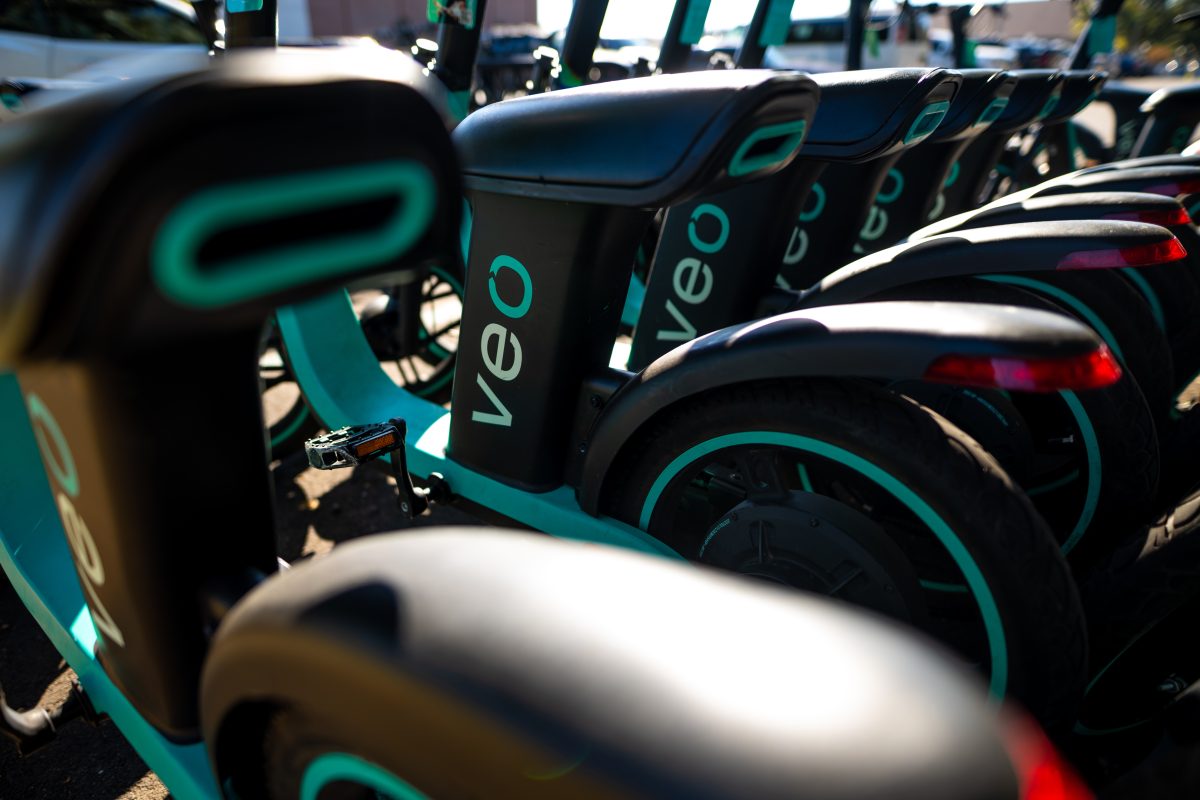The electric scooter-sharing company Veo is about to enter its fourth year on campus, and its mark can be seen on nearly every road and by nearly every building.
With a campus spanning 1,400 acres, getting to class can be a challenge, and The University of Alabama has been trying to find solutions for those unwilling or unable to bike and drive to get around. Traditional public transportation like busing has been around the University for decades, but the Crimson Ride bus system has received criticism for faulty apps, timeliness, overcrowding and labor rights. Many metro transit providers around the country have similarly fallen under fire for inadequate bus systems.
Enter Veo, alongside competitors like Bird and Lime, and its solution to the public transit predicament: micromobility. Instead of relying on huge apparatuses like buses, trains and cars, micromobility centers around smaller devices like scooters and minibikes.
Veo and its competitors offer scooters for riders to rent for short periods of time, usually to get from one destination to another. These scooters can then be made available for other users at their new locations.
Veo arrived on campus in 2021 to fill the need with a product designed for university life. The company has staff dedicated to the college market as well as features like geofencing that prevent riders from driving through areas like the Quad. The scooters are also tied to an account, so that students who leave them as obstructions in non-approved or off-campus areas get fined.
“We care a great deal about it [safety] at the universities. That’s exactly why we have things like geofencing so that we can reduce the speed in high traffic areas,” said Aaron Madrid, Veo’s university market manager.
Veo’s scooters are capped at a speed limit of 15 miles per hour on campus, which gets reduced further in certain areas. They are also designed to follow federal guidelines for safety, which can’t be said of many personal electric bikes and scooters used on campus.
“One thing that we’ve been helping a lot of universities with is so many people are going out and getting on the internet and buying these electric scooters, one-wheels, boosted boards and all that stuff because they’ve gotten so cheap online,” Madrid said.
These devices skirt regulations and can be easily modified to go faster, Madrid said.
“We can come in and offer our vehicles, which provide the same experience only in a more controlled environment,” Madrid said.
Veo also collects usage data that it shares with the University, allowing for more informed decisions about transportation infrastructure. Madrid said that same data can be used to determine how Veo’s employees, who are all hired locally, can spread around the scooters.
This information helps Veo when collaborating with universities by supporting changes with evidence and better supervising safe ridership, Madrid said.
Helmet usage is one thing that Veo hasn’t been able to control, however. While the app does feature instructional videos promoting helmets, most students don’t use them. A national study by the Insurance Institute for Highway Safety found that only 2% of electric-scooter riders reported using a helmet.
This isn’t the only safety concern with Veo scooters. Freshman microbiology major Dade Deaver said, “I’ll be walking on the sidewalk, and then there’ll be a Veo scooter. They won’t say anything, no heads up, just speed right by me.”
Alex Real, a freshman metallurgical engineering major, echoed these sentiments, saying the Veo bikes are “too quiet” and that many of the people riding them are “clearly inexperienced,” sometimes hitting other pedestrians because they don’t have proper control of the bike.
Cities around the country have faced similar issues with pedestrian safety and micro mobility, like Atlanta, which has an e-scooter curfew to protect pedestrians walking at night. Injuries from e-scooters have been on the rise, rising 22% in 2022 from 2021.
Still, Veo scooters can be an invaluable and cost-effective tool for students on campus needing a quick ride to class.
“People love them,” said Caleb Acton, a fifth-year senior majoring in music theory and music education. “I had to use one two years ago, for both semesters, because I had a class in B.B. Comer, and that’s like a 15-minute walk and I had to get there in 10 minutes.”
Madrid said an environmentally friendly transit option is still something on the public’s mind, emphasizing the need to lessen car dependency and expand all forms of public transit.
“People want a different option,” Madrid said. “We just need to put it in place for them.”









